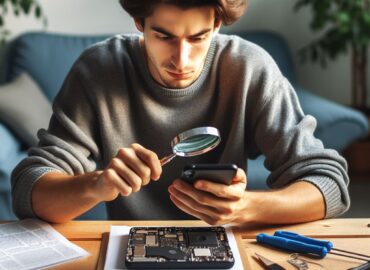The Impact of Water Damage on iPhones and How to React
Introduction: iPhones in Our Lives and Their Vulnerability to Water Damage
iPhones have become an integral part of our daily lives, serving as communication devices, entertainment hubs, and productivity tools. However, along with their indispensability comes a vulnerability to water damage. In this blog, we’ll delve into the potential consequences of water exposure on iPhones and provide a comprehensive guide on how to react in case of such an unfortunate event.
1. Understanding Water Resistance
Water Resistance Ratings and Their Significance: Different iPhone models come with water resistance ratings such as IP67 or IP68. These ratings indicate the device’s ability to resist water ingress to a certain extent. The first digit refers to dust protection, while the second refers to water protection. However, it’s crucial to note that water resistance is not equivalent to waterproofing.
Water Resistance vs. Waterproofing: Water-resistant iPhones can handle a limited amount of water exposure for a specific duration. Waterproofing implies complete sealing against water entry. It’s essential to understand that even water-resistant iPhones can be susceptible to damage if exposed to water beyond their rated capabilities.
Not a Guarantee Against All Exposure: While iPhones are designed to withstand accidental spills and splashes, they aren’t immune to all types of water exposure. This includes scenarios like submersion in water for prolonged periods or exposure to pressurized water.
2. Common Causes of Water Damage
Accidental Spills and Drops: Spilling liquids on your iPhone or accidentally dropping it in water are common scenarios that can lead to water damage.
Humid Environments: Using your iPhone in humid environments, such as steamy bathrooms or during heavy rain, can introduce moisture into the device.
Cautious Approach Needed: To avoid water damage, it’s essential to exercise caution when using your iPhone near liquids or potential sources of water.
3. Immediate Actions to Take
Quick Response Matters: In case your iPhone comes into contact with water, taking immediate action is crucial to minimize potential damage.
Power Off Immediately: Power off your iPhone immediately to prevent short circuits that can occur when water interacts with electrical components.
Avoid Charging: Refrain from plugging in or charging the iPhone, as this can exacerbate the damage.
Accessory and SIM Removal: Remove any accessories, SIM card, and the case to facilitate drying and prevent potential corrosion.
Gentle Drying: Gently dry the device using a soft, lint-free cloth. Avoid excessive wiping, as it can push water further into the device.
4. What NOT to Do
No Heat Sources: Do not use heat sources like hair dryers or ovens to dry the iPhone, as excessive heat can damage internal components.
Avoid Shaking: Shaking the phone vigorously can spread water internally and cause further harm.
No Disassembly: Refrain from attempting to disassemble the phone yourself, as this can void warranties and worsen the situation.
5. Rice Myth Debunking
Rice Isn’t the Solution: Contrary to popular belief, placing a wet iPhone in a bag of rice isn’t an effective drying method. Rice doesn’t efficiently absorb moisture from the internal components. Doing so could allow small particles of rice to damage your iPhone
Desiccants and Silica Gel: Instead, use desiccant packets or silica gel, which are designed to absorb moisture more effectively.
6. Seeking Professional Help
Importance of Professional Assessment on water damage: If your iPhone has been exposed to water, consider seeking professional help from Apple or an authorized service provider.
Hidden Internal Damage: Some internal damage might not be immediately visible. Professionals can assess the extent of the damage and provide appropriate solutions.
7. Long-Term Effects of Water Damage
Corrosion and Malfunctions: Water damage can lead to corrosion of internal components, causing malfunctions over time.
Potential Data Loss: Water damage might result in data loss, underlining the importance of regular backups.
Long-Term Issues: Even if your iPhone appears to work after drying, long-term problems can emerge due to residual moisture.
8. Prevention and Precautions
Use Water-Resistant Cases: Invest in a water-resistant case to provide extra protection for your iPhone.
Mindful Placement: Be cautious about where you place your iPhone, especially near water sources like sinks, pools, and beaches.
Waterproof Accessories: Consider using waterproof accessories like headphones if you plan to use your iPhone near water.
9. Backing Up Your Data
Regular Backups: Regularly back up your iPhone’s data to iCloud or a computer to prevent data loss in case of water damage or other accidents.
Being Cautious and Proactive
In conclusion, iPhones, while innovative and versatile, are not impervious to water damage. Understanding the water resistance ratings, acting swiftly when exposed to water, and seeking professional help when necessary are crucial steps in minimizing the impact of water damage. By staying cautious and proactive, you can enjoy the benefits of your iPhone without falling victim to water-related mishaps. Remember, a little prevention and quick action can go a long way in safeguarding your valuable device.





